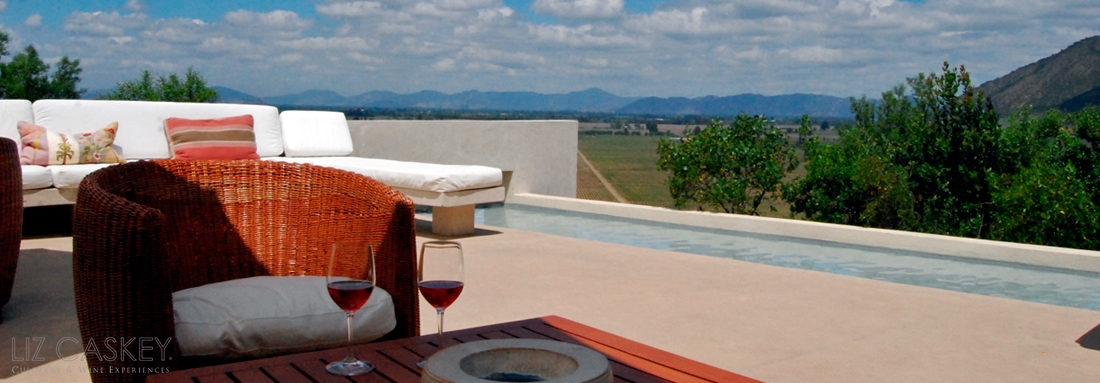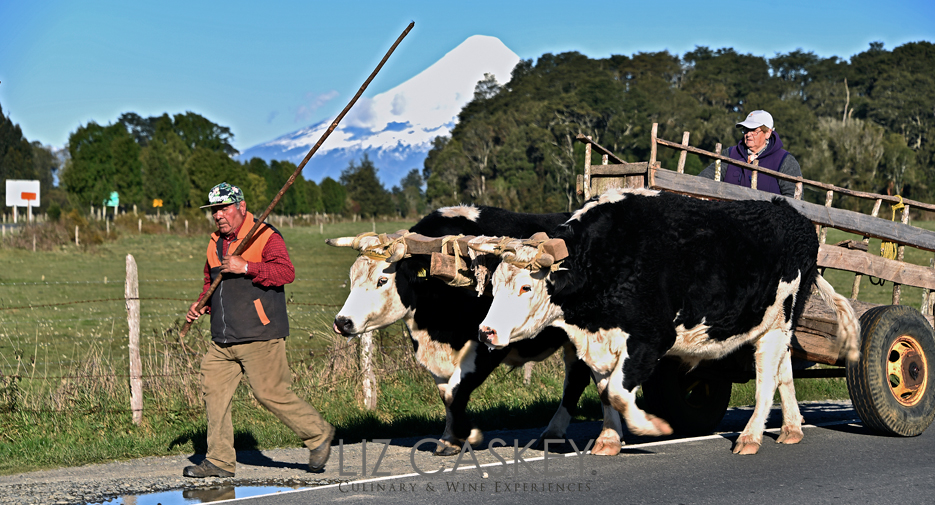
I am standing in an ancient forest with a tree canopy so tall it masks the sun. The trees reach high into the heavens above me. I am surrounded by the cold “jungle”, the selva valdiviana, a dense rainforest in the south of Chile.
I survey my surroundings. It is an explosion of green in every imaginable shade. The leaves, the ferns, the mosses, the lichens, the hanging vines…everything is green except the trail we follow.
I walk with my four-year-old daughter in silence. I break the silence to ask her a question. She shushes me, and says, “Mama, I am listening to the trees.”
We continue (in silence). The forest is alive. I sense it’s quiet movement. A brook babbles in the distance. Birds rustle leaves as they chirp to each other. A branch creaks and breaks under the pressure of my hiking boot.
The forest feels damp and freezing cold. It’s the kind of cold that penetrates every single crevice of your body. The distinct aroma of “forest floor”, a combination of fallen leaves decomposing and dew, permeates the air. Despite the chilly conditions, I am feeling rather invigorated.
Micaela sprints down the path to catch up with her father, little brother, and our guide. I purposely lag behind. I stop to rest on a large stone. I suddenly feel this intense need to internalize and mentally “record” this place. I know I will want to return to this forest in my mind later.
I sit and take a few deep breaths. I empty my mind and let go of everything. A feeling of deep peace washes over me. It is one of those elusive, thought-free moments where my internal chatter has been turned off. I only perceive total stillness.
I don’t know how long I sat on that rock. 10 seconds? A minute? 5 minutes? The stillness was so profoundly restorative, it felt like I was reorganizing my molecules. I was suddenly snapped out of the moment with a loud, “Mommmmmyyy!!!!”
That is the closest to oneness I have experienced in nature. It was not a lightning bolt ‘aha’ moment, rather, a gentle melting into the NOW.
I slowly walk back to join everyone. Chards of light beam through the trees onto the leaf-strewn ground like a laser. That peace and stillness of that forest, though, linger on. It was a defining moment of internal peace where I still return again and again.
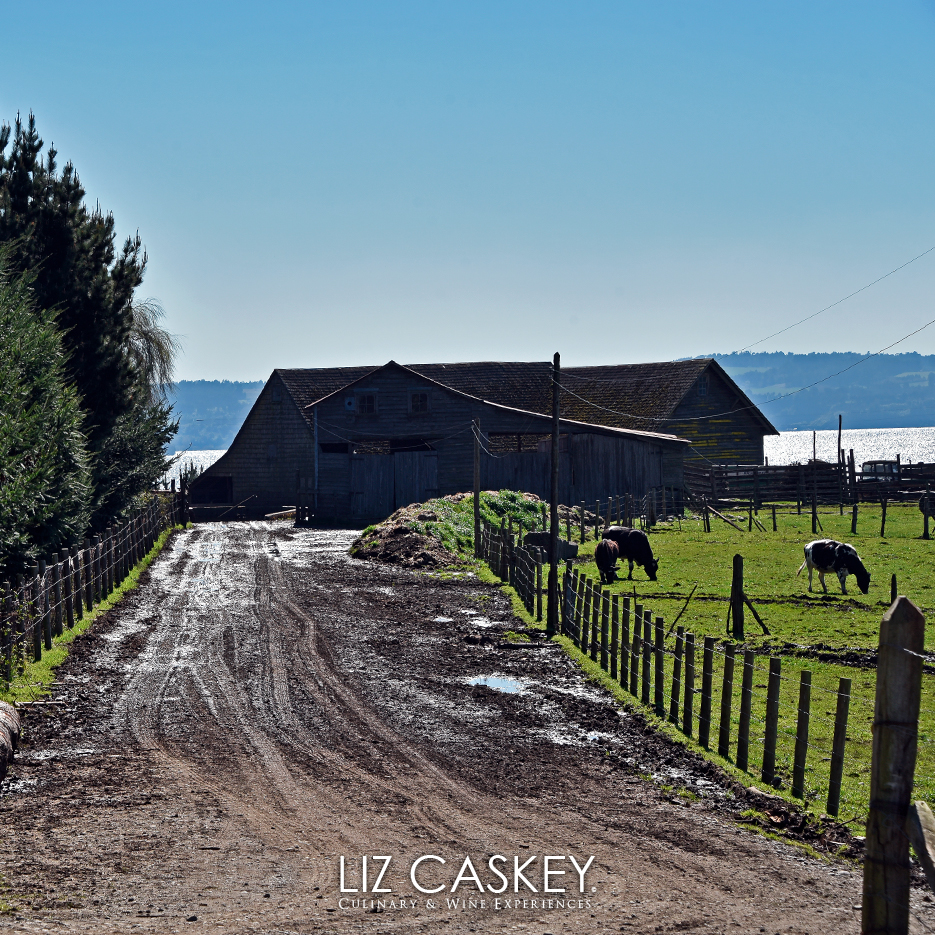
Much like my story in the southern forest, many Chileans have had their own similar experiences in the south, too. They refer to the south of Chile usually in a nostalgic tone as if it was a mystical, fairytale land. Even the phrase, “La Magia del Sur”, the magic of the south, is commonly used to describe the region and its charms.
The lake district is certainly a stunning place: dense ancient forests, fertile farmland, sapphire-blue lakes, snow-capped volcanoes, wild natural reserves, charming lakeside villages, and hot springs tucked away in the Andes. I think, though, the real allure is the quiet and stillness. Nature is so present there. It’s godlike. The scenery takes us far from our day-to-day urban reality and puts us in a place where we remember where we come from. Obviously, we want to internalize that peace and presence so we can return to it as a mental escape.
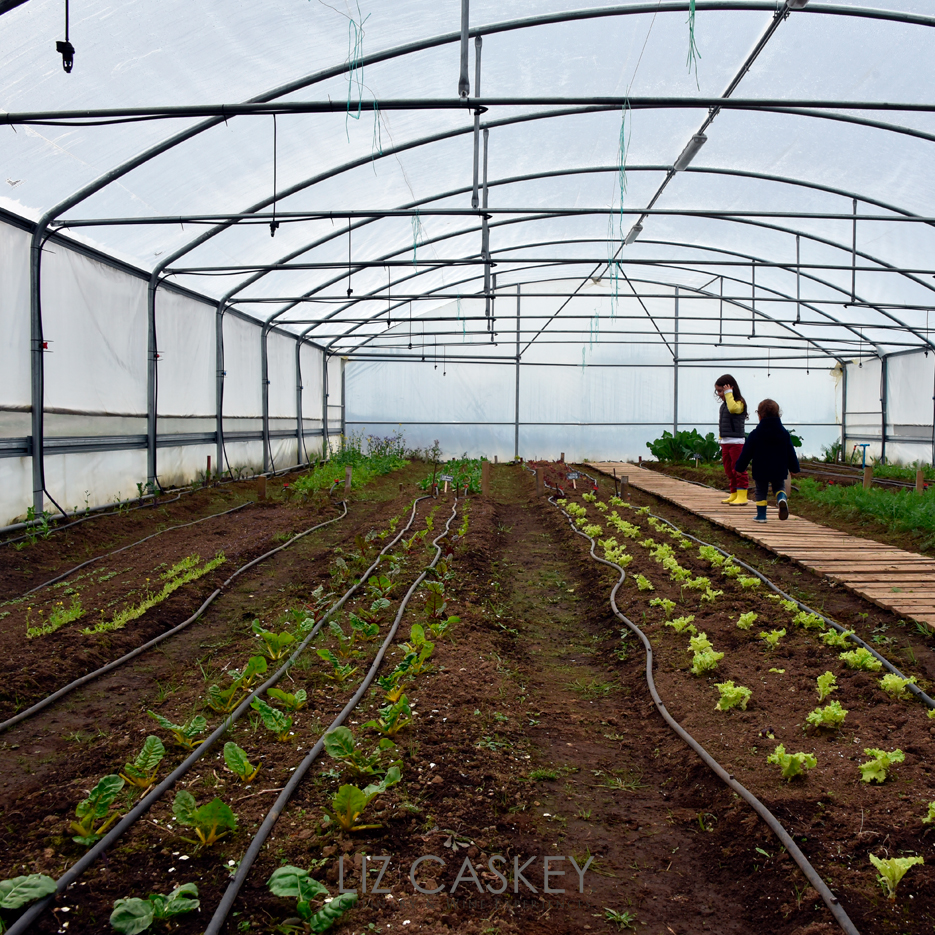
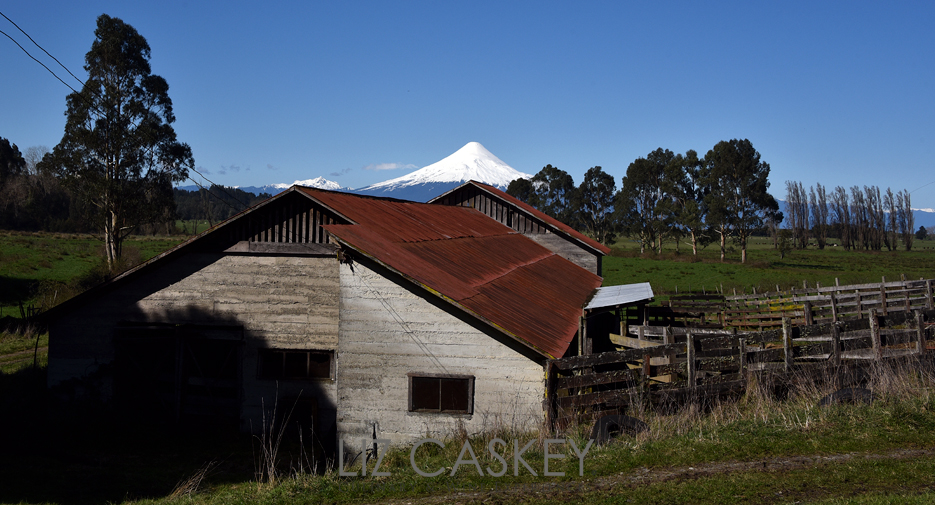
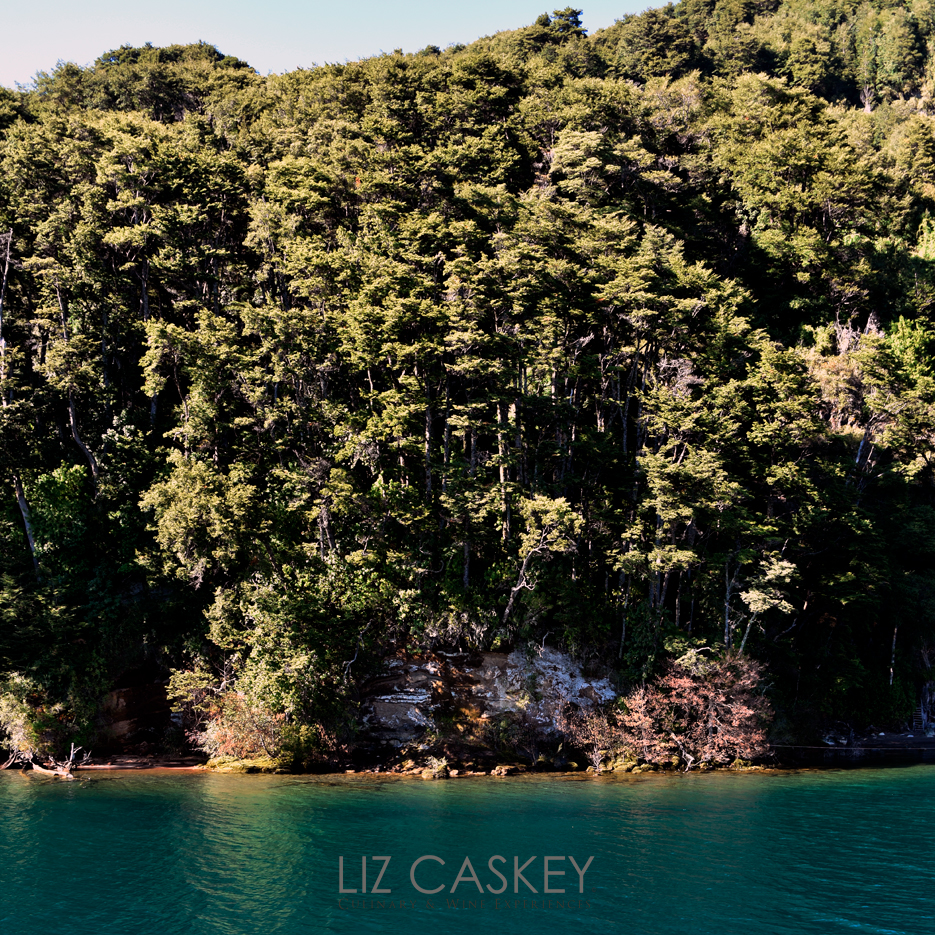
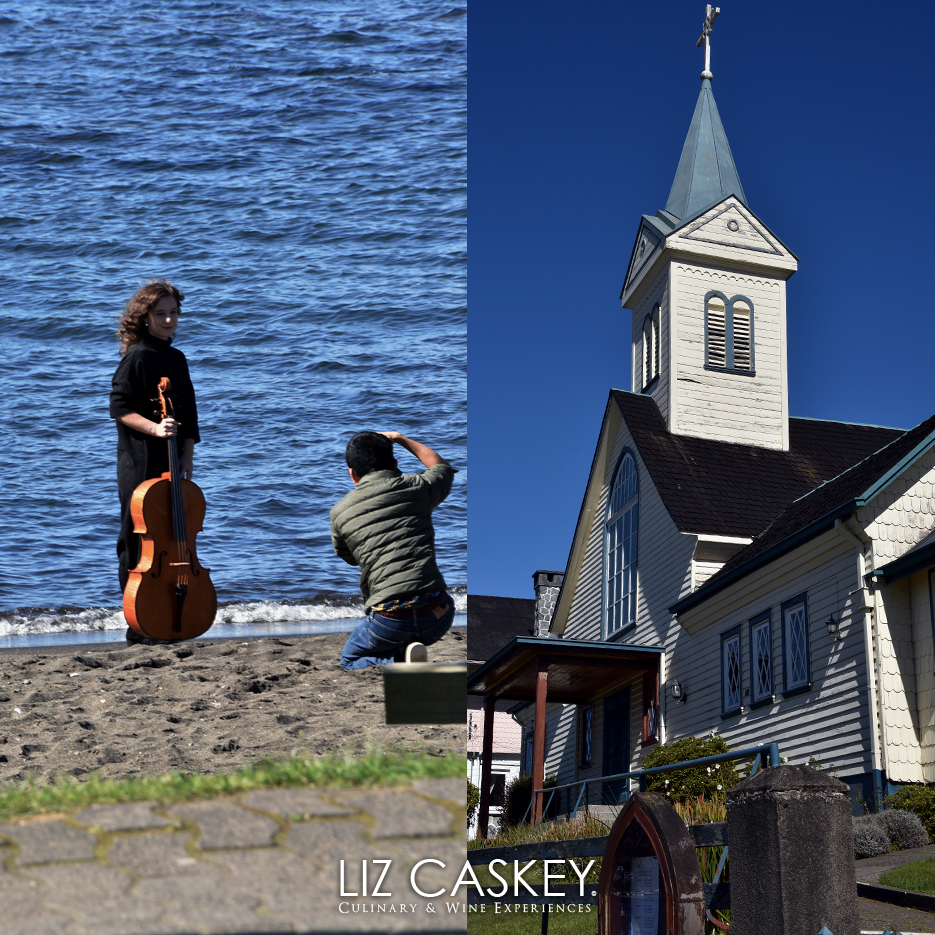
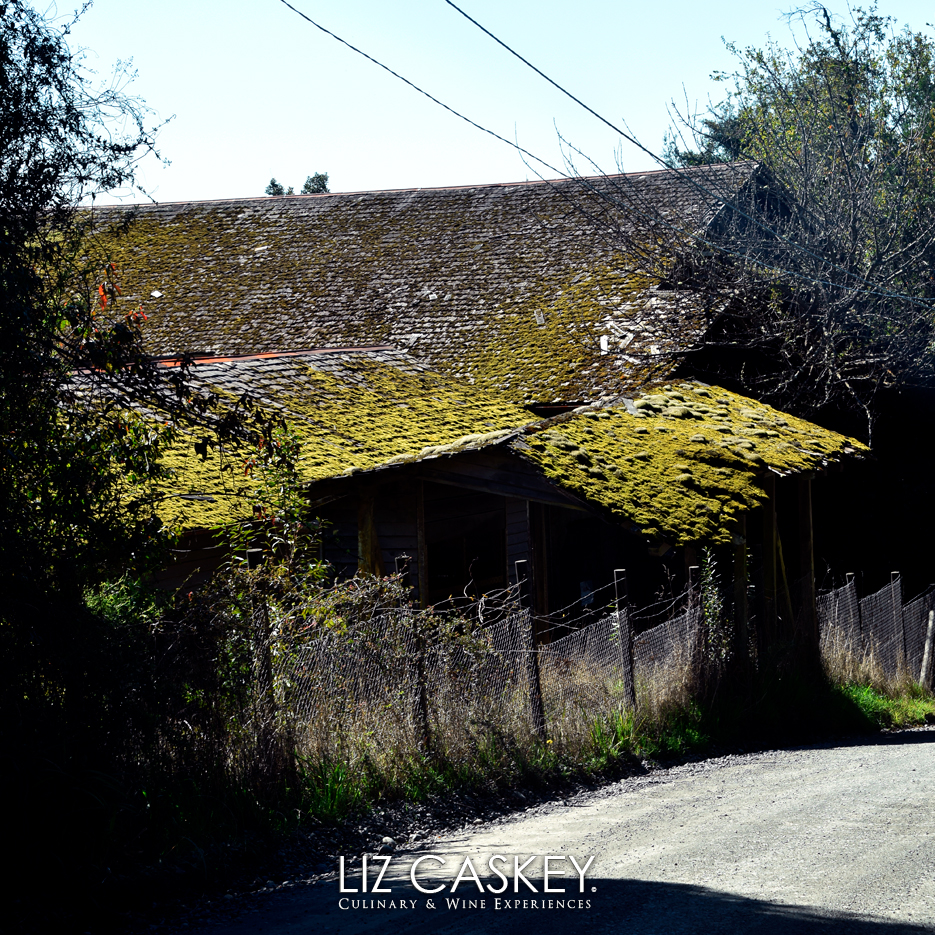
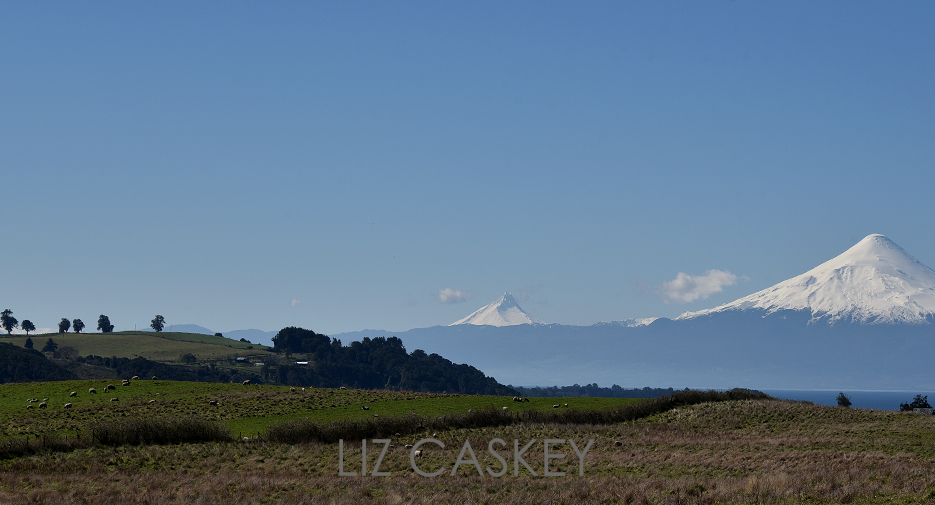
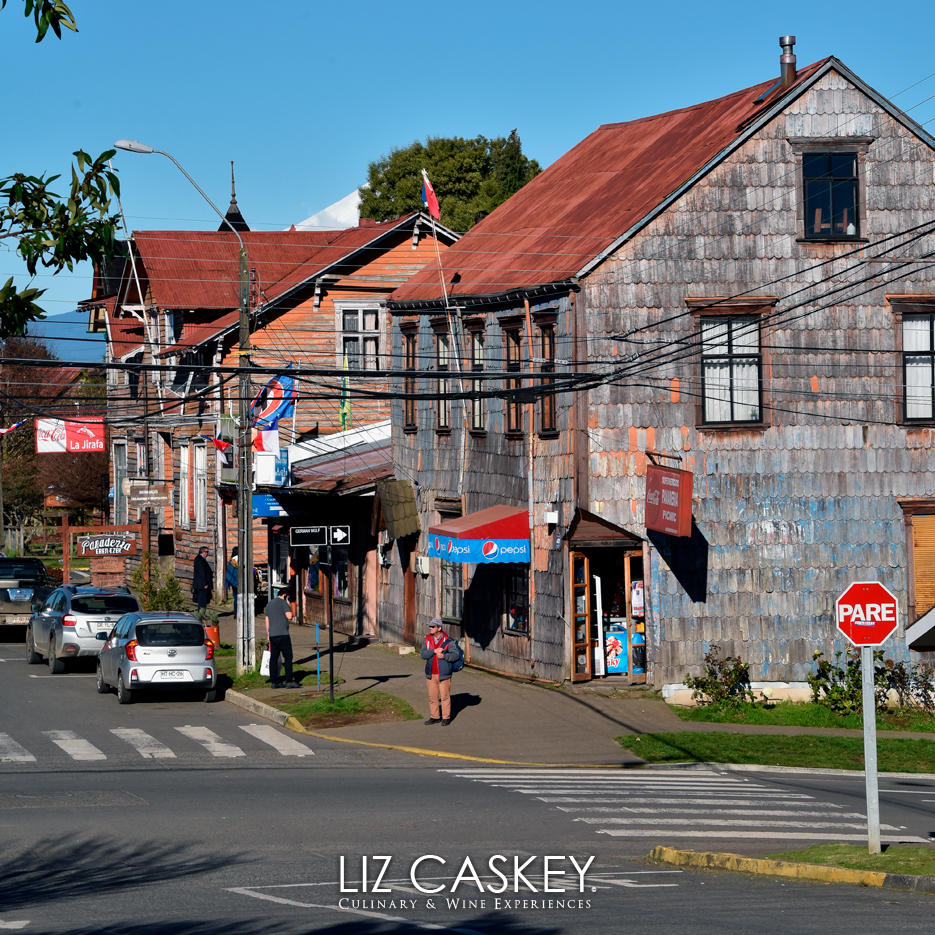
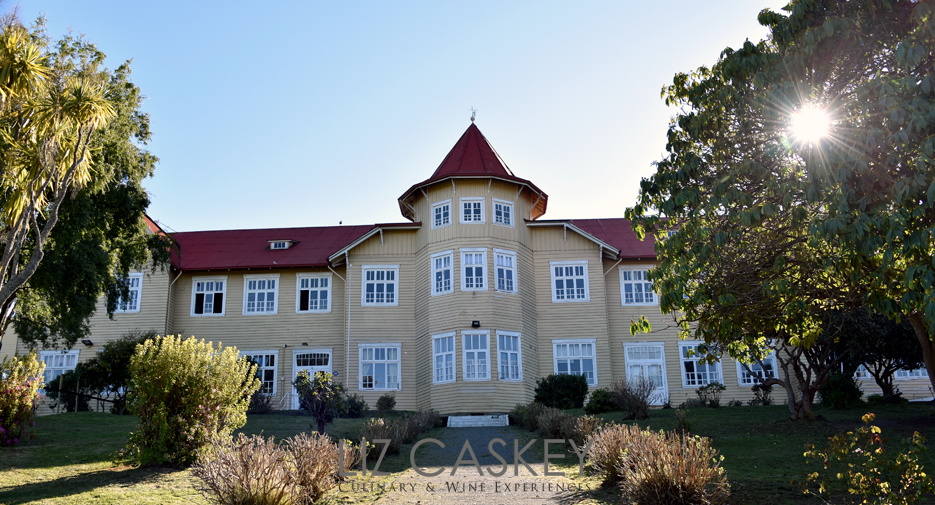
My “forest moment” was just part of our weekend away in Puerto Varas, the southernmost part of the lake district. We landed early one luminous, chilly morning at the Puerto Montt airport and made our way to our home base, Hotel AWA, 20 minutes outside of town on the shores of Lake Llanquihue (the second largest lake in Chile).
AWA first hits you with its visual punchline of glass and concrete overlooking the placid lake. Nearly every room has an unobstructed lake and volcano view. However, true to its family roots, the vibe is homey. The space was designed to be an extension of the owner’s original home, which still sits on-site next to the hotel.
As owner Mauricio Fuentes said, “My parents were totally in love with Puerto Varas from day one. They took their honeymoon (by train) to Puerto Varas and returned every year for their anniversary. In 2005, they saw the parcela (land), where the hotel is located today, for sale. It was love at first sight and they knew it was destiny–they literally bought it on the spot. That same year, my father also knew he wanted to have a hotel and started working on brainstorming the architecture. Ultimately it took nearly 10 years between imagining it, creating the blueprints, going through the iterations, construction, and opening, but the here we are.”
Like any property in the south of Chile, all you have to do is walk out back to the garden to gather some herbs, vegetables, and eggs. Or in AWA’s case, just put on some rubber boots and cross the road to their huerta, the vegetable farm, and greenhouse. They enlisted the head of the permaculture for the Douglas Tompkins project (Pumalin) down in Patagonia to create an impressive garden that stocks a huge variety of vegetables year-round. This is not a minor feat considering the short, rainy growing season in these latitudes with a climate akin to the Pacific Northwest.
Nearly 60+ crops are in constant rotation both in the greenhouse and in raised beds outside during the summer months. The greens that appear on every lunch and dinner menu–baby kale, tender lettuces, amaranth microgreens, to name a few–are harvested every morning by hand. Those greens are so incredibly luxurious in their freshness, vibrancy, and crunch. Literally, all the vegetables on the menu are homegrown and need minimal doctoring minus some piquant olive oil and sea salt. The free range eggs from the squawky chickens frequently appeared at breakfast in orange-hued omelets. The food ethos at AWA is simple: healthy, clean, sustainable, and local. If it’s not grown on their farm, you can be pretty sure it has been sourced in a neighboring village or from an artisan close by.
While certainly, the hotel is perfect for decompression from urban life, the whole point of being there is to get outside. Puerto Varas and Llanquihue lake have this rather singular geographical mix of snow-capped (ACTIVE!) volcanoes, lakes, fjords, forest, and the Pacific ocean, all within very close proximity. The altitude is almost at sea level, an oddity for being so close to the Andes. Thus, getting up into the mountains is easy on your body (no altitude issues) and the fresh sea air constantly blows.
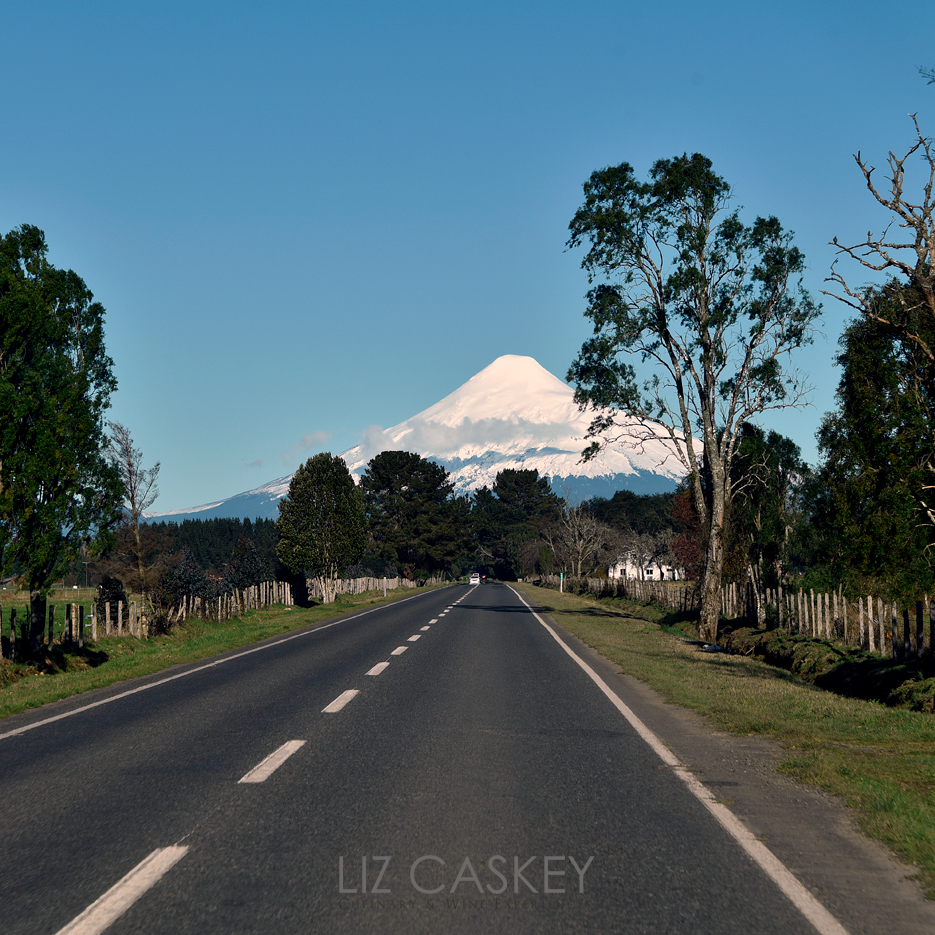
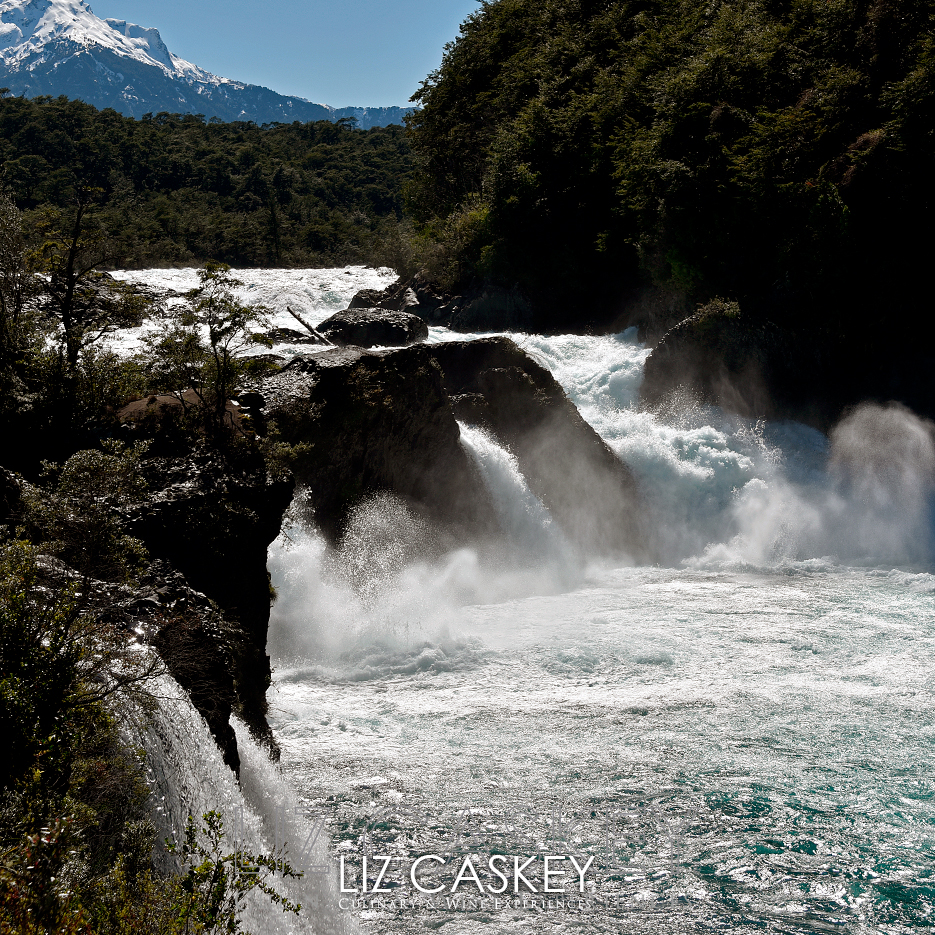
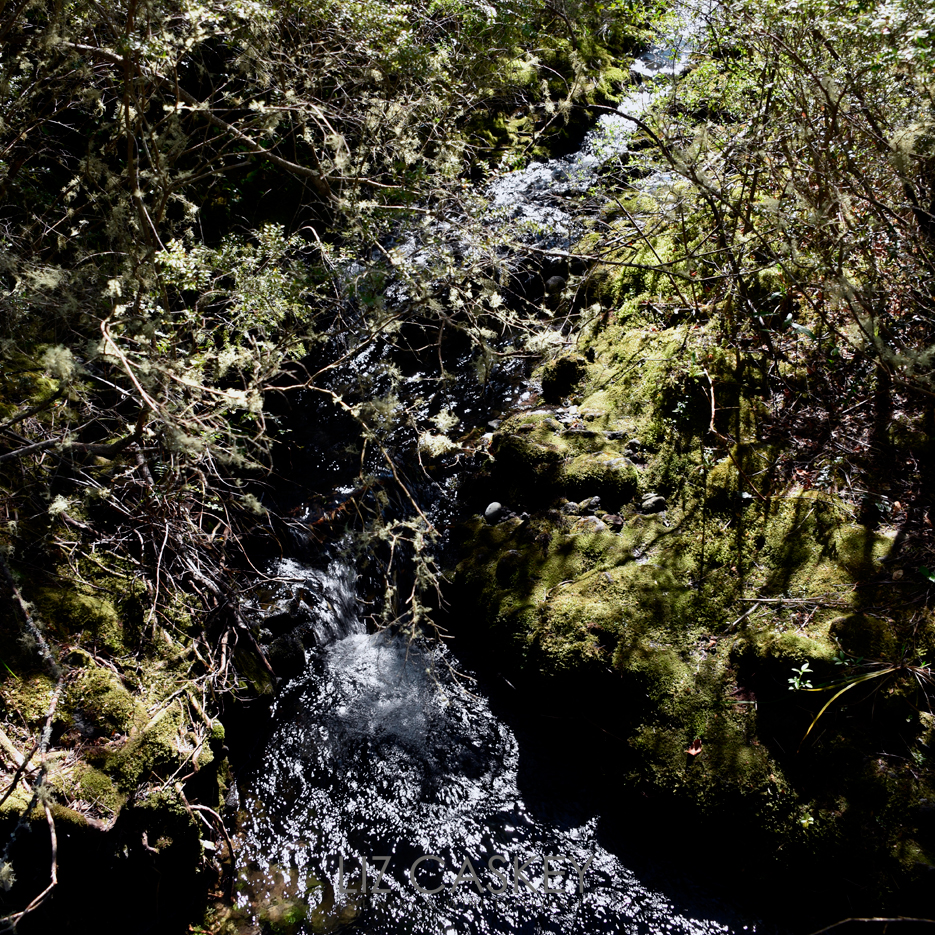
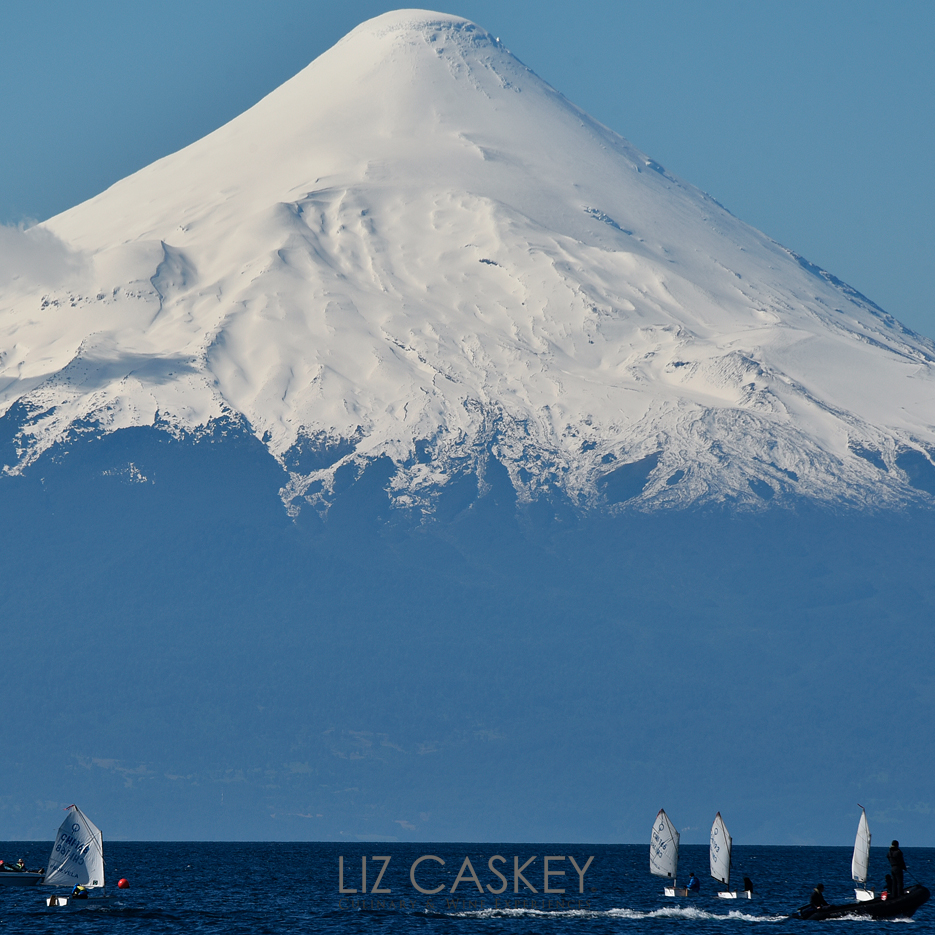
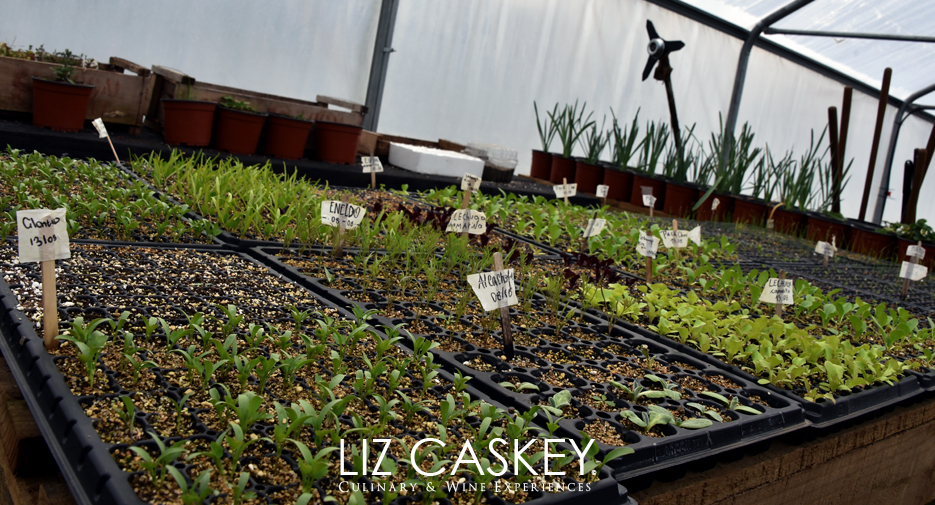
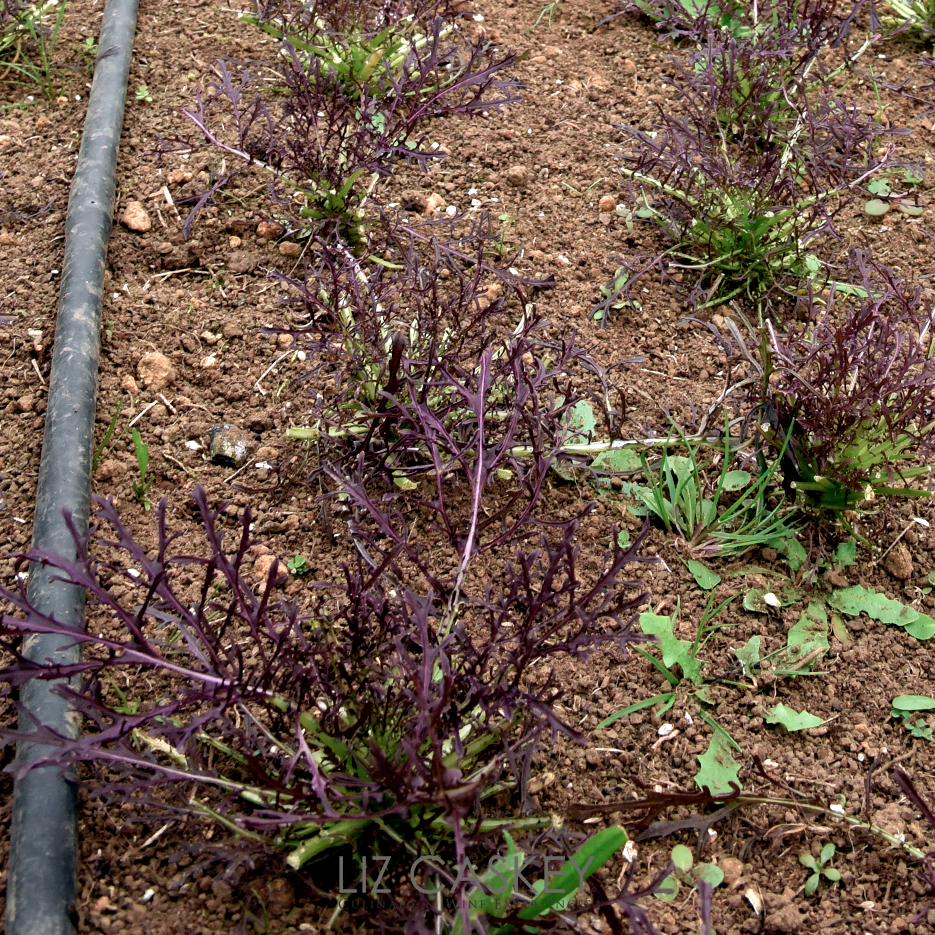
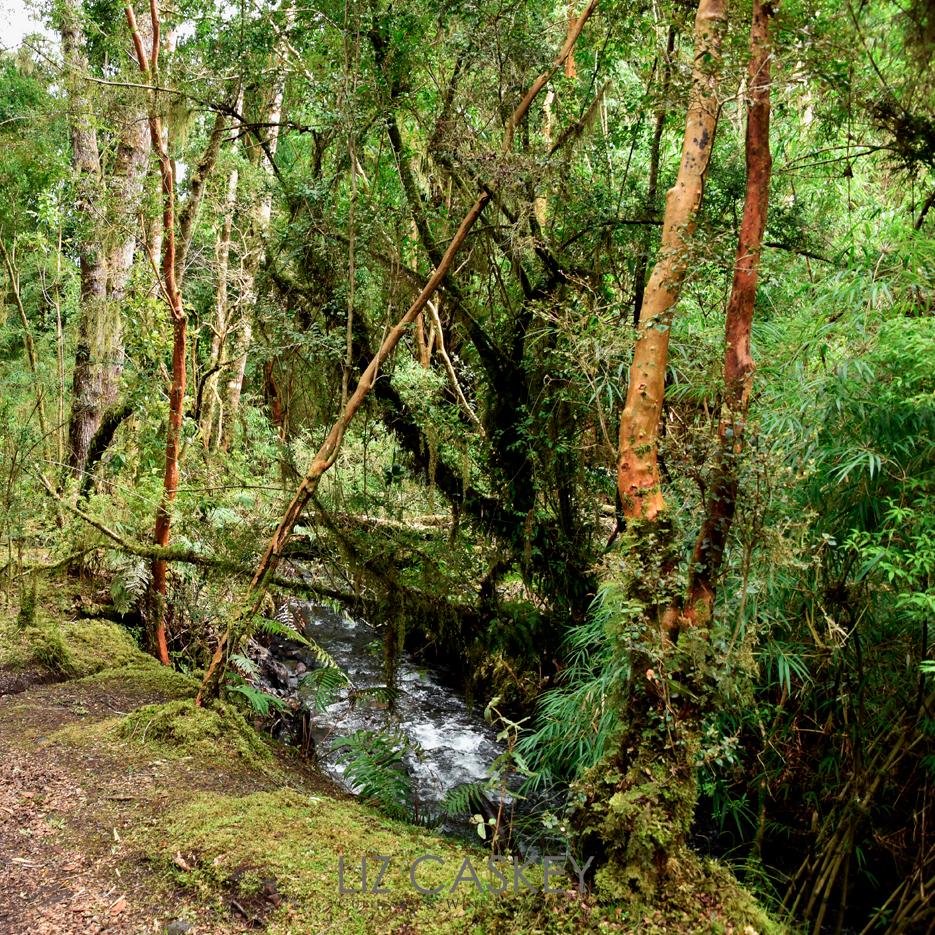
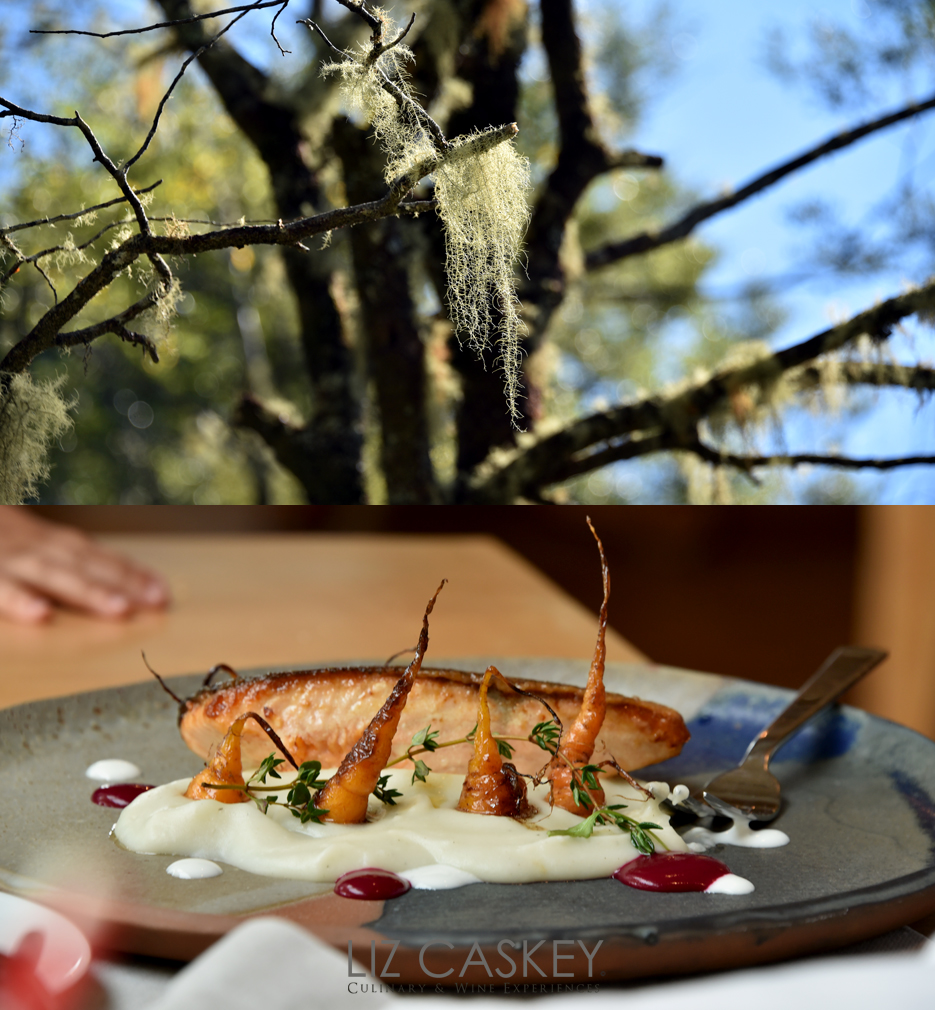
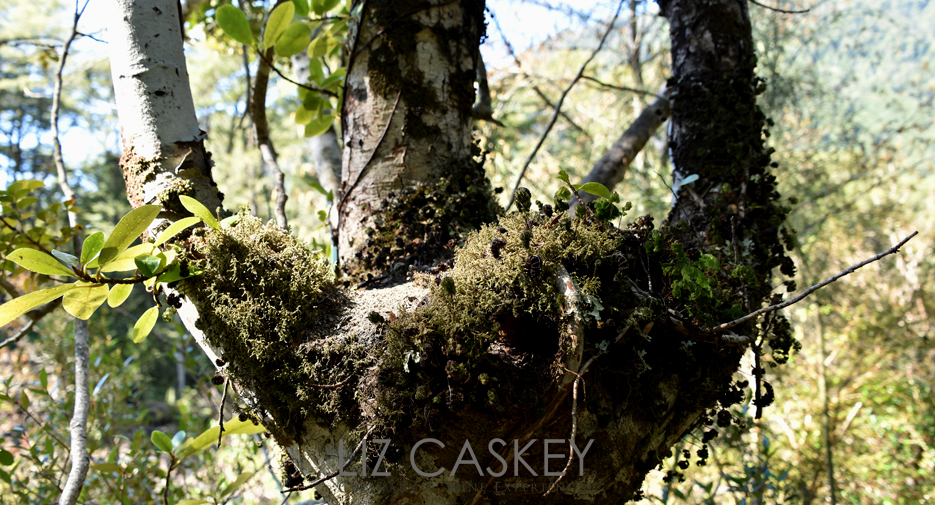
While there are dozens of excursions at AWA, we divided our days into tracing the road around the lake, diving into the iconic national parks in spitting distance of the hotel, and exploring the native forests.
Mid-morning the day of our arrival, we packed up the kids and set off around the perimeter of Lake Llanquihue, nearly 200 kilometers–and several hours of driving. We broke up the trip with stops in the scenic towns facing the deep blue waters, always with vistas of the Osorno and Calbuco volcanoes.
Puerto Varas was founded in the mid-19th century by brave Germans arriving in Chile seeking freedom from religious persecution. They founded the town and set off to conquer the dense forests, sadly burning many of them, to make way for the farmland that now characterizes the south. Puerto Varas today has become quite a local foodie destination with a crop of hip restaurants, artisan breweries, chocolate makers, cafes, and tastemakers who now call it home. Perhaps it’s the rain, the outdoorsy lifestyle, the foodie vibe, the young crowd, but I always am reminded of Portland, Oregon when there. Perhaps it is a Chilean cousin.
North of Puerto Varas, we stopped off in the beautiful lakefront town of Frutillar, perhaps the most Germanic in the region. Now a stylish destination for city slickers from Santiago wanting second homes in the south, and an escape to a slower, more bucolic life, Frutillar has a fervent arts scene with the Teatro de Lago, Lake Theater, sitting on the waterfront. One of the best opera houses in the country, the theater attracts world-class musicians for its music festivals and has superb acoustics.
In Frutillar, there’s also a fondness for afternoon onces, tea time. Here, the German traditions run deep and kuchen, a thick, sweet cake usually made with seasonal fruit like apples or berries, is the preferred partner for tea. This charming little town also has one of the few “urban” beaches on the lake that is black from the volcanic sand. Micaela was particularly intrigued.
“Mommy, the beach has BLACK SAND!!” She exclaimed, widening her eyes.
“Yes, honey.” I added quickly, “You cannot go swimming. The water is freezing cold.”
She ignored my comments and stripped off her socks, “Don’t worry, I am just going to get my toes wet.”
My girl, always the negotiator.
She bolted to the water’s edge, running in the soft waves that gently lapped at her feet. The sun shone intensely, but a cold wind blew. I snuggled into my alpaca overcoat. It was hardly weather for getting your feet wet–unless you happen to be a penguin or are four years old. Kids never seem to care about those details. That was until her feet had turned into little ice cubes.
She warmed up and we carried on, edging along the lake towards Puerto Octay. Sometimes the road was smooth and paved, sometimes a 4×4 would have been appropriate with the bumps. We passed charming 19th-century farmhouses with wooden shingles and high roofs that seemed to have been transported directly from Bavaria. Bails of hay and silos dotted the pastures and rolling hills giving me constant flashbacks to my childhood in Lancaster, Pennsylvania. That is until we’d round a curve and I saw the silhouettes of the volcanoes in the distance. We definitely did not have volcanoes in Pennsylvania.
We found a sheltered spot for a picnic just outside of Puerto Octay on the water. The wind had picked up. We sipped a favorite artisan beer, Chester, and feasted on creamy mantecoso cheese and local cured ham. The shadows were growing longer. We were getting close to the golden hour, that magical time when the entire south of Chile is shrouded in a golden orb of light as the sun sinks into the western horizon. A photographer’s dream!!
In the hilly village of Puerto Octay, German-style homes covered the hillsides with weathered wooden shingles, all carved by hand. The pretty dainty plaza was the congregating point for daily life and commerce. Down the hill, boats bobbed in the choppy waves in the marina. My focus here was singular. I had come for butter. Yes, THE BUTTER. But not any butter…the BEST butter in Chile was made in that little village. This butter had become a borderline obsession. I found their little shop off the plaza selling a half dozen havarti-style cheeses, fresh eggs, Germanic sausages made in Nueva Braun, homemade sauerkraut, and THE BUTTER.
I stocked up on a ridiculous amount. I probably looked like the crazy gringa dragging all this butter back to Santiago. Who does that?
“Disculpa, senora,” the cashier said, “You realize this has to be refrigerated until you fly, right?”
Of course, I did. In the name of delicious food and hard-to-find ingredients, I will pack anything (legal) to travel.
Butter in cooler, we drove into the countryside towards the base of the volcano. We were surrounded only by verdant pastures and hundreds of cows. We encountered a friendly couple driving their wooden cart home, pulled by oxen. We rounded the north side of the lake. Suddenly the terrain became rocky, crumbling into the water below. The forests descended to the beach with a density that completely obscured the view. It made me appreciate what the colonists had endured settling these remote villages. In fact, they often sailed from one side of the lake to the other instead of taking that very long road.
Back at AWA, my daughter and I went for a swim in the long lap pool that appears to plunge into the lake. It’s a rather funny architectural feat. I felt as if I was swimming in an aquarium. A little warning for the swimmers…the crowd below having drinks by the dock can fully observe you floating in the pool. Be sure to adjust your bathing suit before diving in.
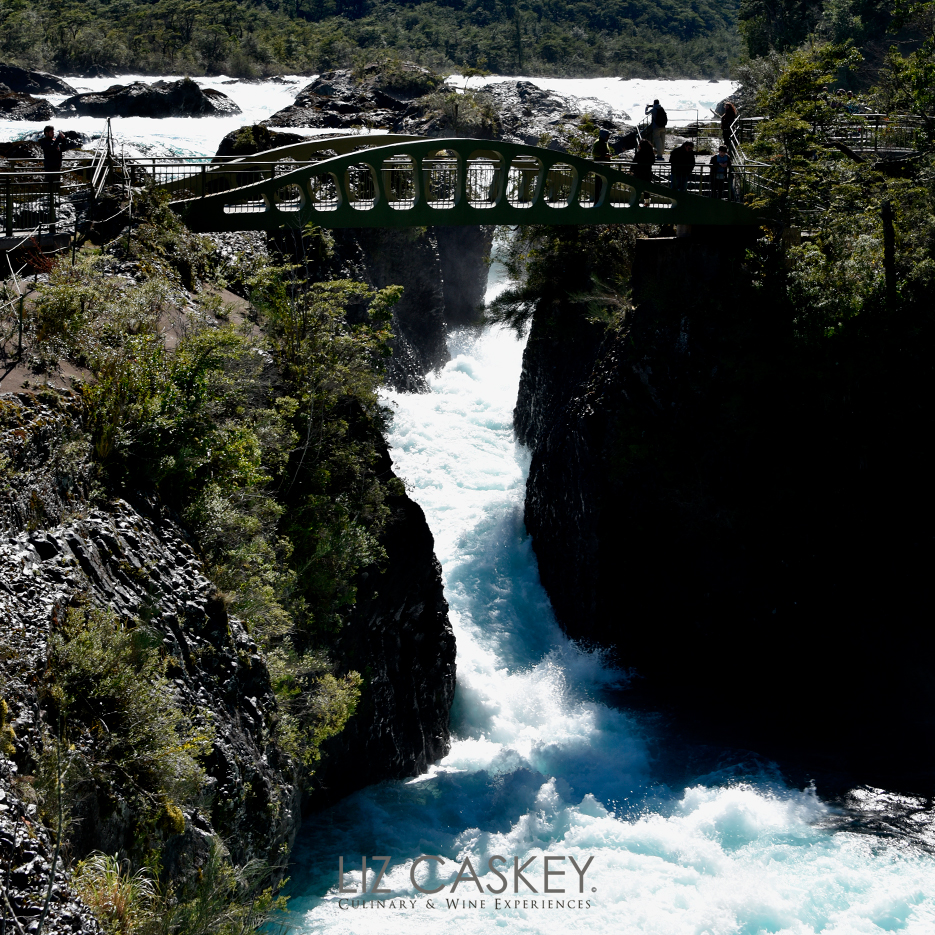
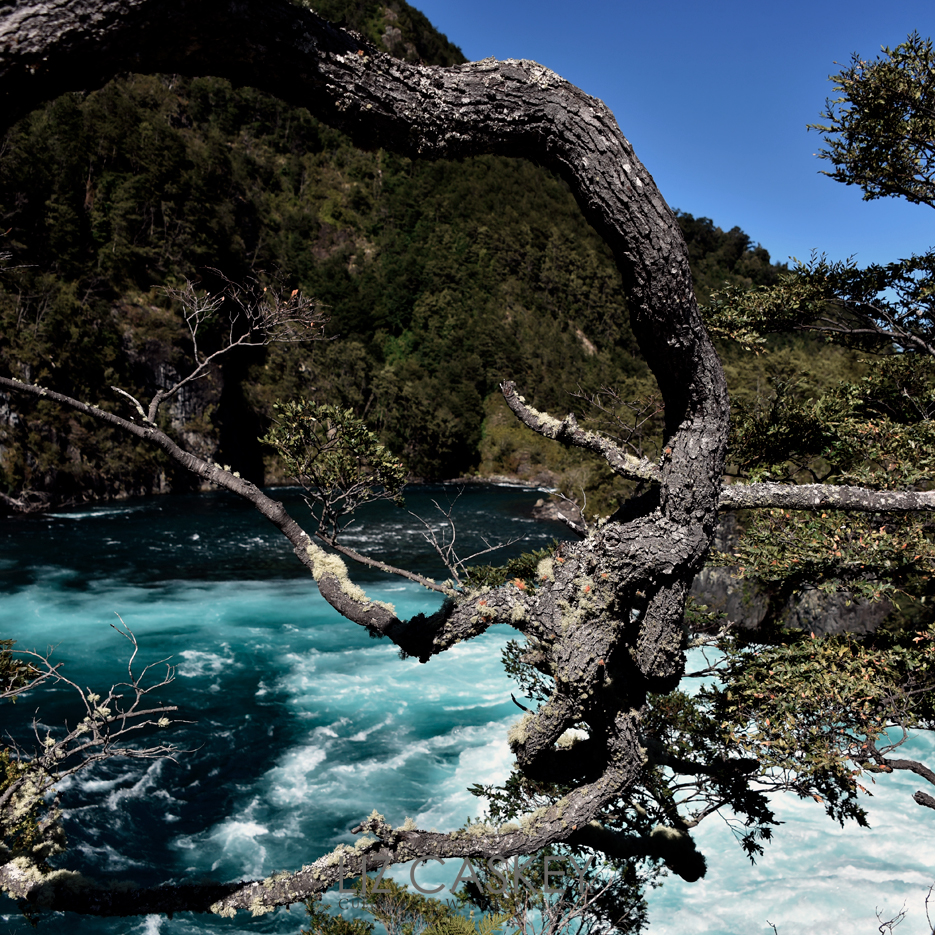

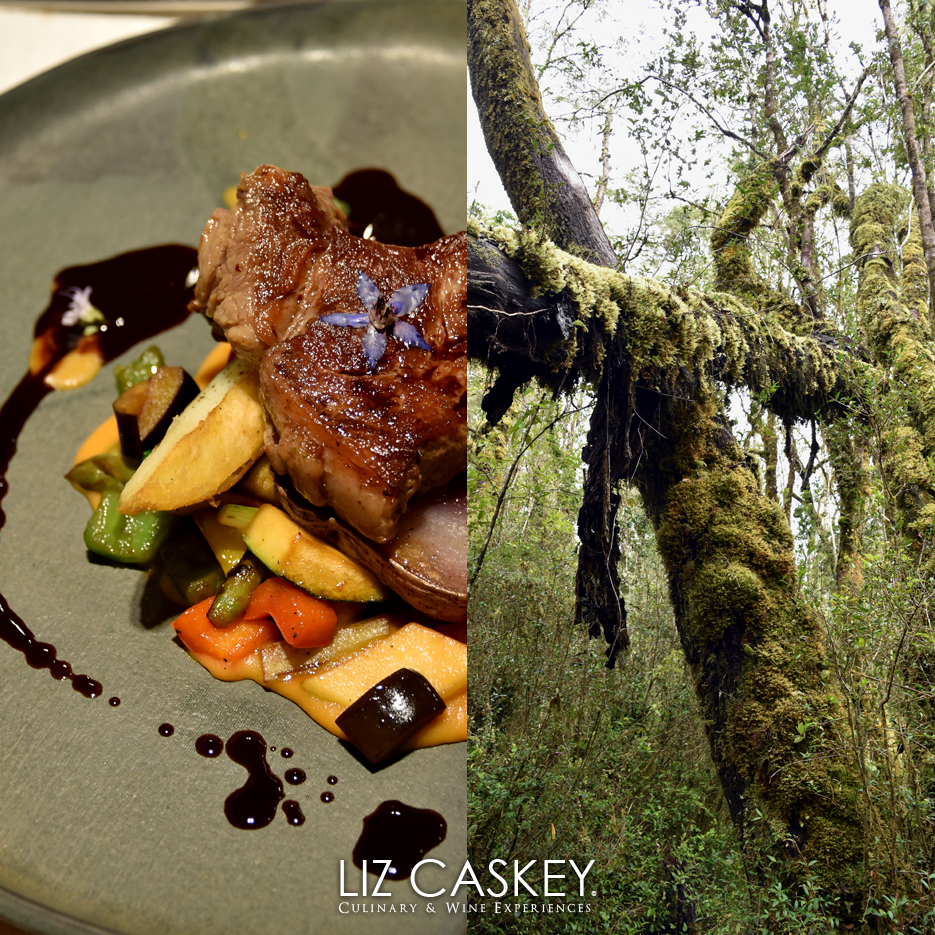
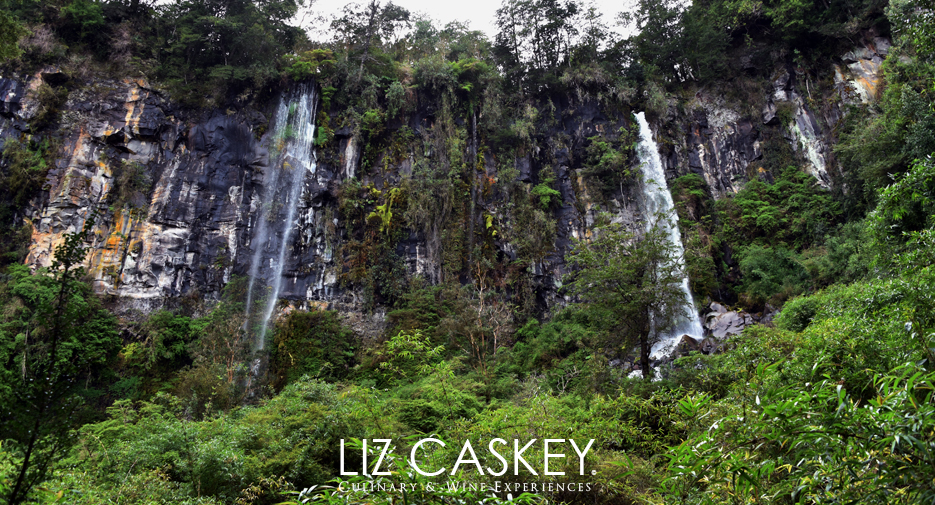
The next morning, we woke up to another cloudless day. I could hardly believe it. Two days of sun in a row? Where was the moody southern weather? What about rain?!? Today we headed into the nearby Vicente Perez Rosales National Park to sail the emerald Todos Los Santos lake.
As we approached the national park, the volcano appeared to grow vertically. There were ridges formed by hardened rivers of lava that had left potholes and cracks in the pavement from the last eruption. The vegetation grew scarce and there were “DANGER!” signs and evacuation routes posted everywhere (ironically all pointing to only one way out). I relished being able to see Osorno in all her gleaming, snowy glory.
We boarded a catamaran and sailed far out into the lake. The temperature outside was frigid. The icy air stung my nose hairs and gave me shivers, even with the warm sun on my back. We were surrounded by six snow-capped peaks in a 360-degree view. The water was crystalline and a deep emerald hue. We could see to the bottom nearly 40 feet below.
As we approached the port of Petrohue, we passed a miniature wooden house floating like an island. Apparently, it was the “dollhouse” of the Edwards family, one of the wealthiest families in Chile. They constructed for their girls at their vacation home in the middle of the national reserve.
We stopped off down the road in Petrohue to walk along the lookout bridges to see the surging waterfalls of the river. The wind whipped us and the bridges felt too exposed for my taste–at least with our precious babies in arms. We paused briefly to marvel at the water rushing below. I kept my composure, but I was grateful when we were far away from the water. The elements of nature somehow fascinate me and terrify me at the same time.
We picnicked downstream in a protected nook surrounded by black sand. The kids bulldozed happily with some trucks they had brought. I was enjoying the warm sun and a beer buzz. Then, our guide surprised us with the last part of the excursion.
“Guys, so now, we are going to drive up the volcano!”
I flashed my husband one of those “oh-hell-no-we-are-so-not-doing-that” looks. Why exactly would I want to drive up the side of an ACTIVE volcano?
“The views of the lake are amazing, and it’s a chance for the kids to play in the snow. It’s a real ski resort with chairlifts.”
He had a point. Our Mediterranean climate kids had not yet experienced snow. The idea still felt a little out of my comfort zone, but it could be cool…
We zigzagged through the native forest, ascending over thousands of vertical feet. The trees got smaller until we were above the treeline and there was no vegetation at all. Only snow, ice, rocks, and stratified sooty sand. The sapphire Llanquihue Lake appeared immense below, like an inland sea.
At the ski resort, there was a full on snow party in progress. Apparently, half of Puerto Varas had come to sled (and ski) on the weekend. We trekked through the slush to buy round trip lift tickets. Micaela was jumping up and down with enthusiasm to ride “the big swing.”
Back in the day, I had been a decent skier–but I had never skied on the side of a volcano and much less taken my small child on a rickety chairlift. I guess this was part of the adventure, no? We sat on the lift and I pulled down the safety bar. I held her close to me as our feet dangled high in the air, trying not to look down. She didn’t seem phased. She was more bewildered with the snow and how snowballs are made.
“This stuff really falls from the sky?” She asked. “Why? How?”
Kids remind us adults so often of what’s simple in life. They ask the right questions and approach everything with such a sense of wonder. We threw snowballs and made goofy videos of us making snow angels. That was until my phone went kerplop into a snowdrift.
Shit.
She chuckled at my fumble–thankfully the phone/camera survived.
When we were ready to go down, Mica looked at me very seriously and said, “Mommy, I am going with Robby (our guide) this time.”
Leonardo, our toddler, was already in his kiddy carrier with his father who was getting on the chairlift.
Well, okay then. I am riding solo. There I was all by myself on that chairlift, on the side of the volcano, with that amazing view of the lake, fjords, mountains, and countryside below. What to do in such a scenic location? Could I just be alone with myself and my thoughts? Maybe…for a few minutes. Then I did what anyone would do. I whipped out my camera and took a ton of selfies.
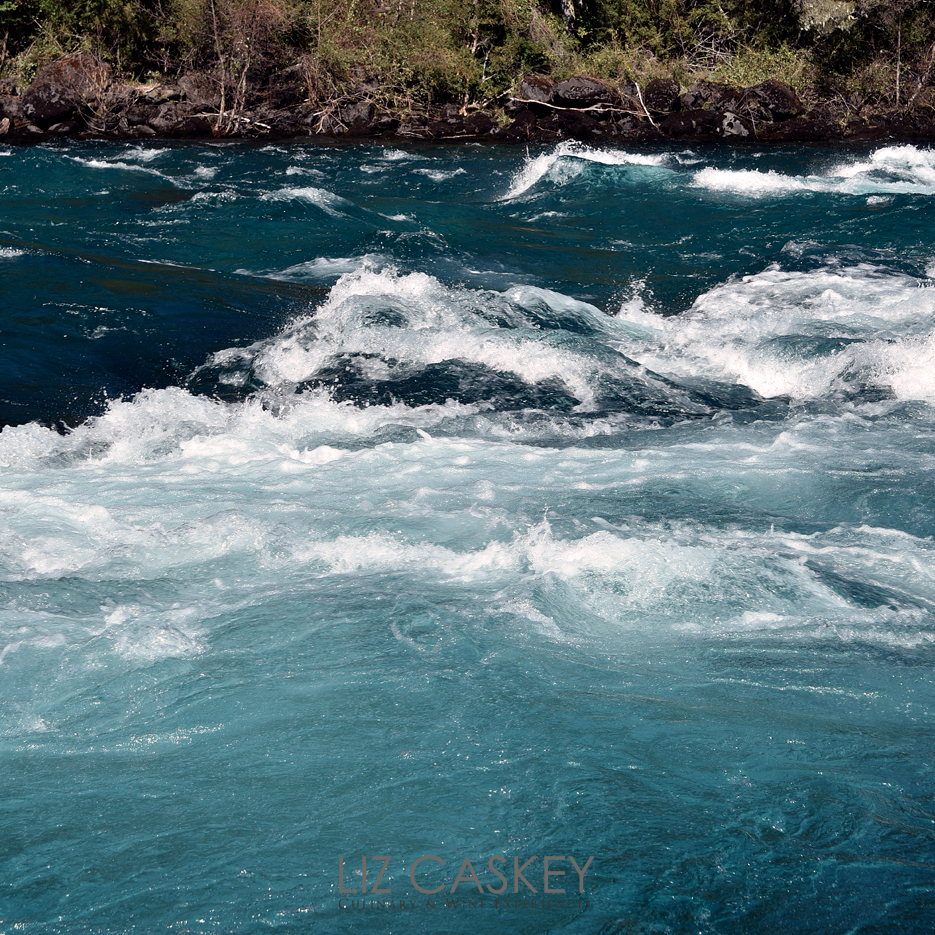

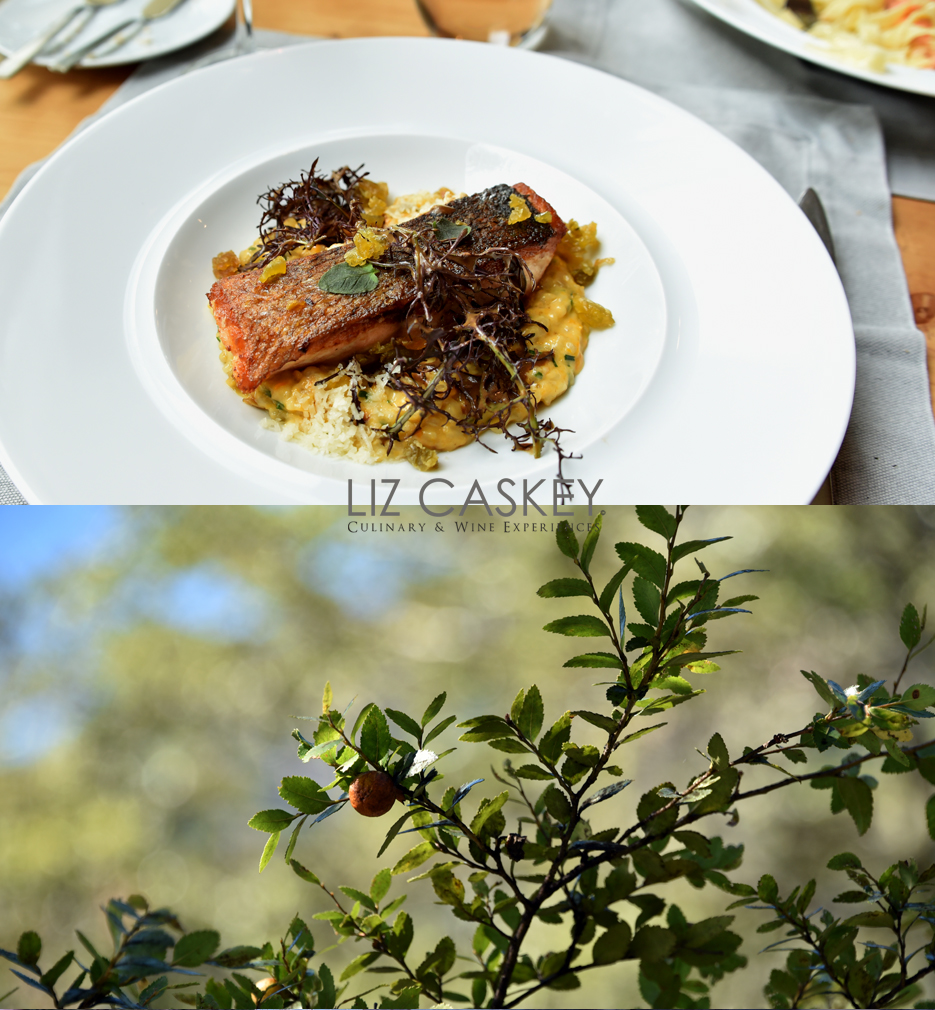
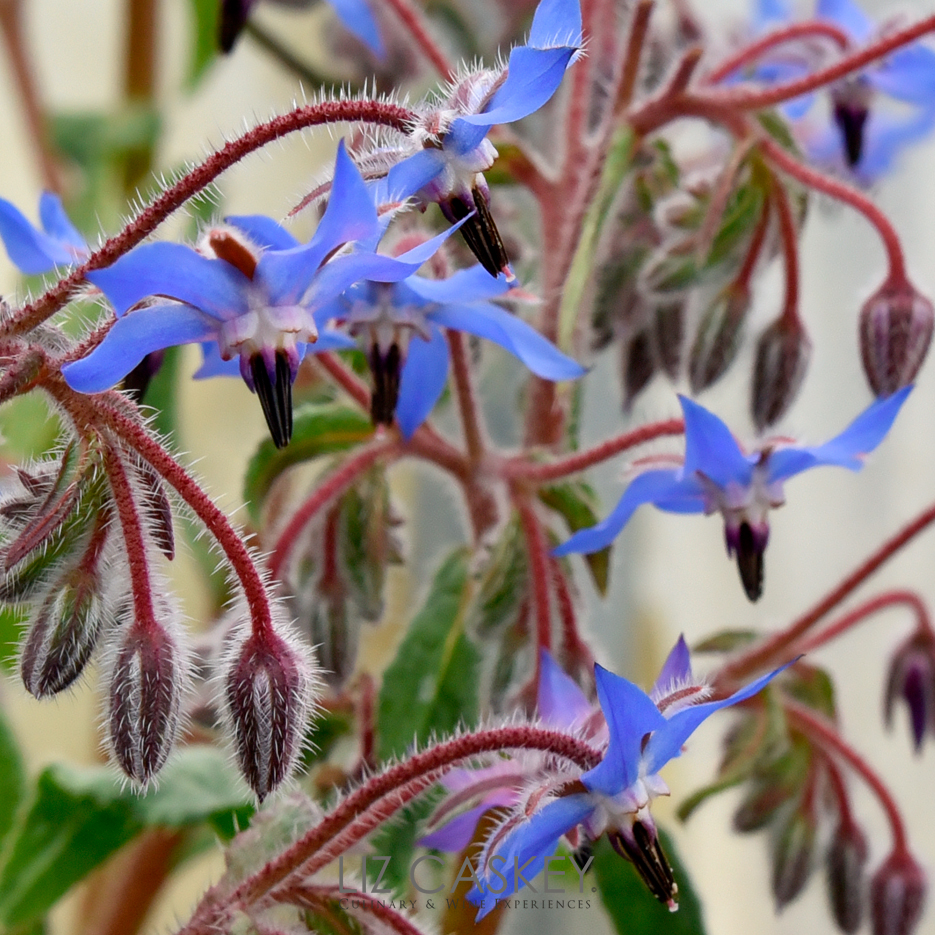
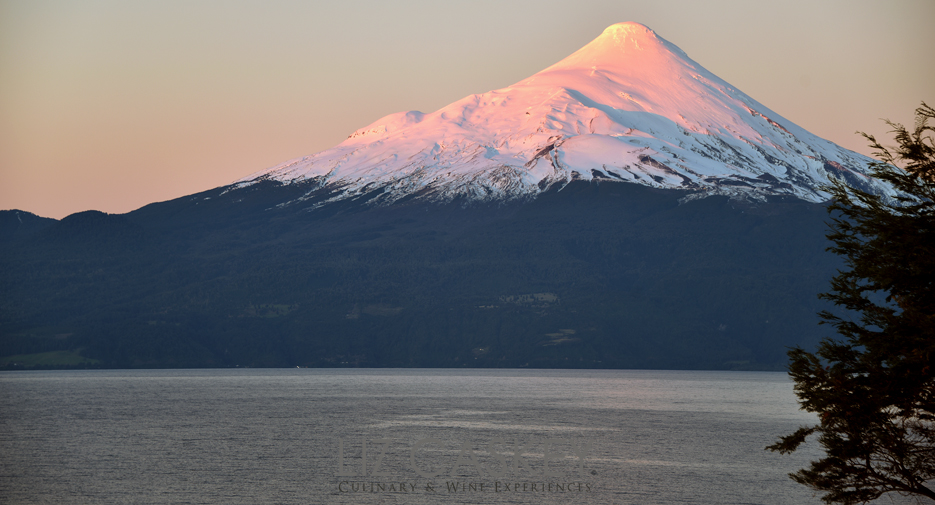
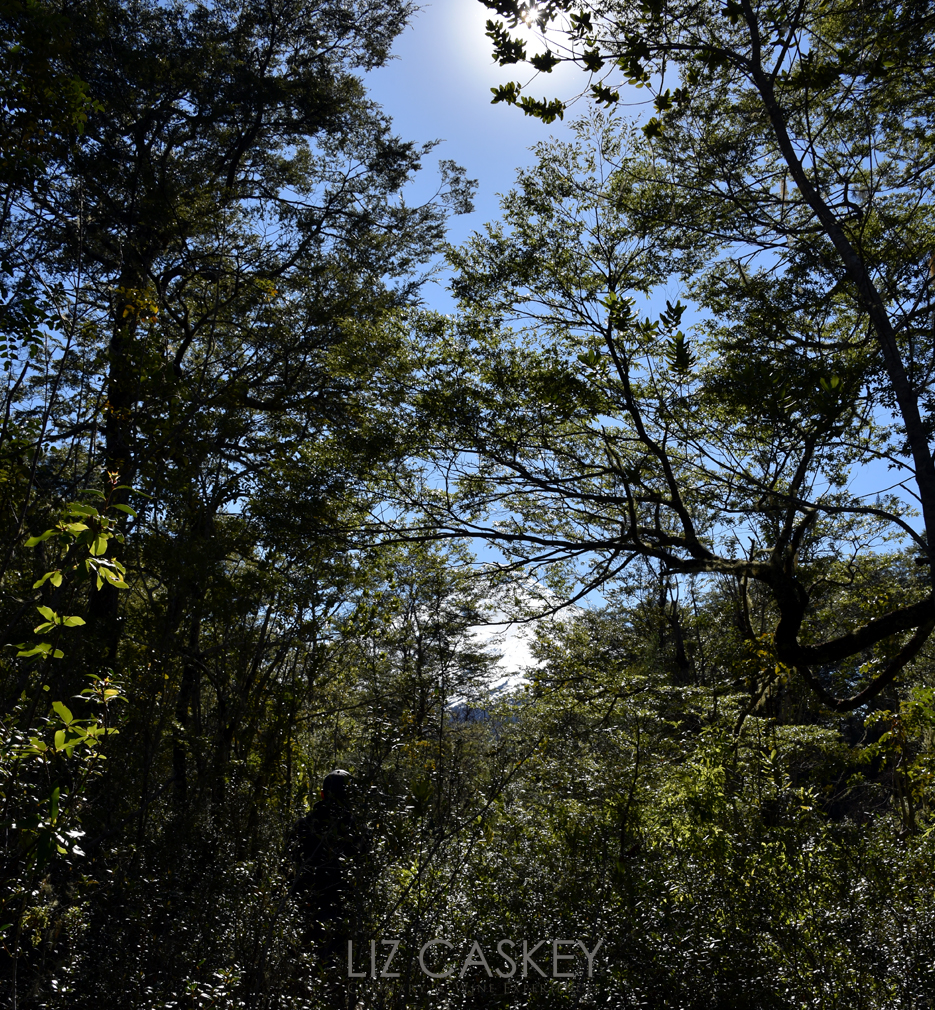
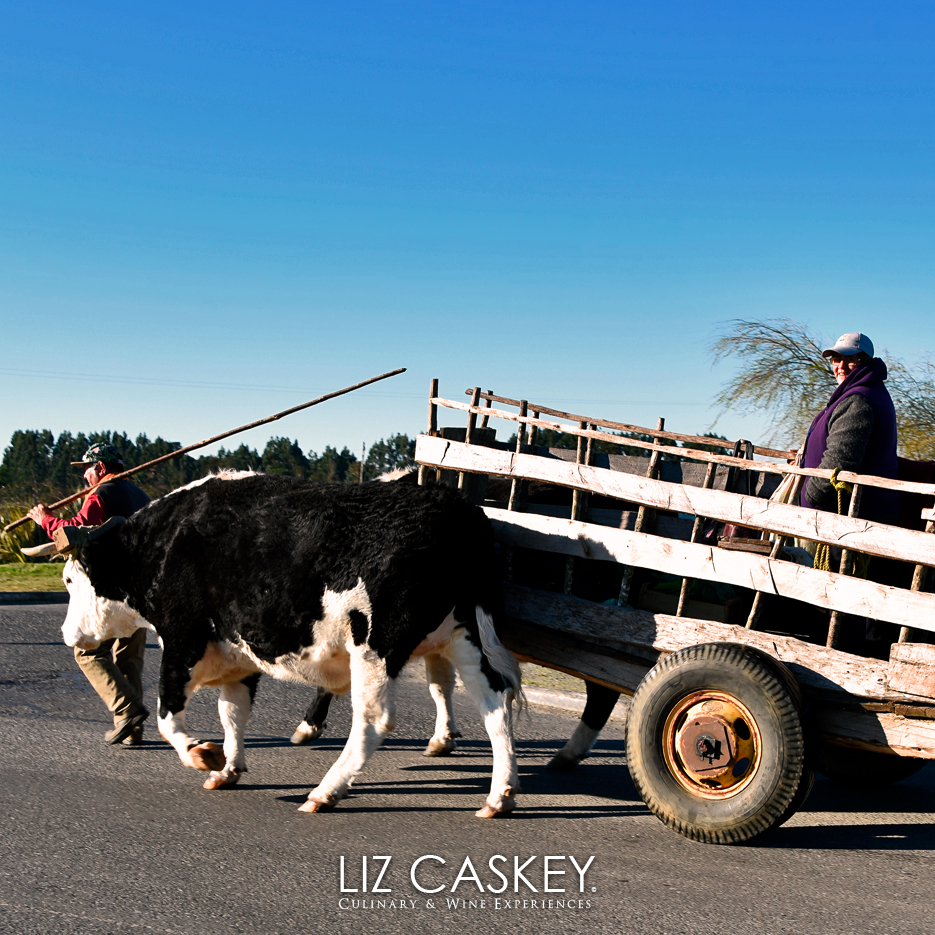
The last day, I wanted to go for a walk in the forest, the selva valdiviana. We went to two reserves. In the second, we found a gushing waterfall and I had my “forest moment” that I will never forget. The day had started with the sun but it soon grew gloomy, cloudy, and cold. Arriving back at the hotel for lunch, I didn’t want to stray far. Instead, we visited with the master gardener.
“Rain is coming”, he said, as he pointed to the sky. “You have been lucky with this unusual (sunny) weather.”
We had been. Secretly, though, I really wanted it to rain–at least once while in the south of Chile. As a rain-starved pluviophile living in Santiago, traveling to the south of Chile without any rain was a total bummer.
Near sunset, still no rain in sight, we wandered down to the dock next to the Fuentes family home. The dock extended into the lake, which looked like a mirror reflecting the clouds. I walked out to the end alone. It was so peaceful. I suddenly felt that stillness again, just like in the forest. I closed my eyes and stayed there for a few minutes. That stillness really felt like I was recharging my battery on a deep level.
When my mind started to wander, I let myself daydream. You know how this goes, right?
Me (to myself): “We should really sell our apartment in Santiago and move here RIGHT NOW. We could buy and remodel one of those cute farmhouses. I could plant my own organic garden with white (native) strawberries. I could learn to cook on a wood-burning stove. Oh yeah, and here I would have the perfect excuse to permanently live in my Hunter boots. Maybe I could finally even be a little more outdoorsy. I could even try something like camping (normally out of the question for me).”
I let the idea “visit” with me for a few minutes. It felt idyllic, like a breath of fresh air. Could I be up for a total change of life like that?
I looked at the still water. Then it hit me. I didn’t need to turn my life upside down. I most definitely did not want to camp anywhere (ever). What I wanted, and needed, was that stillness I had found inside–even if it was only for a moment. That was what I was yearning for–a respite from my own busy-ness.
Around dinnertime, it finally began to rain softly. Then it became a pittery pattery rain. I could hardly contain my excitement. I ran outside, with no umbrella, just to feel the drops on my face. I wanted to breathe in the perfume of rain-soaked air. I was ecstatic! I felt like a kid. The rain was as beautiful as the sunshine that Mother Nature had given us the previous days.
It rained all night into the morning. The kids and I enthusiastically donned our rubber boots to splash in the puddles before getting in the van to head to the airport. As we drove through the pastures towards the airport, the clouds lifted and the sun illuminated the foggy countryside. As we took off, the clouds, momentarily opened to reveal the verdant patchwork fields below.
I suddenly felt this pang of nostalgia. I wanted to scream, “NOOOOO!!!!!! Don’t make me leave!”
Then I remembered my peaceful forest and that I could go there any time in mind. I smiled at my husband across the aisle, motioning for him to look out the window at the view.
“Damn,” I said, “the south of Chile is so beautiful.”
